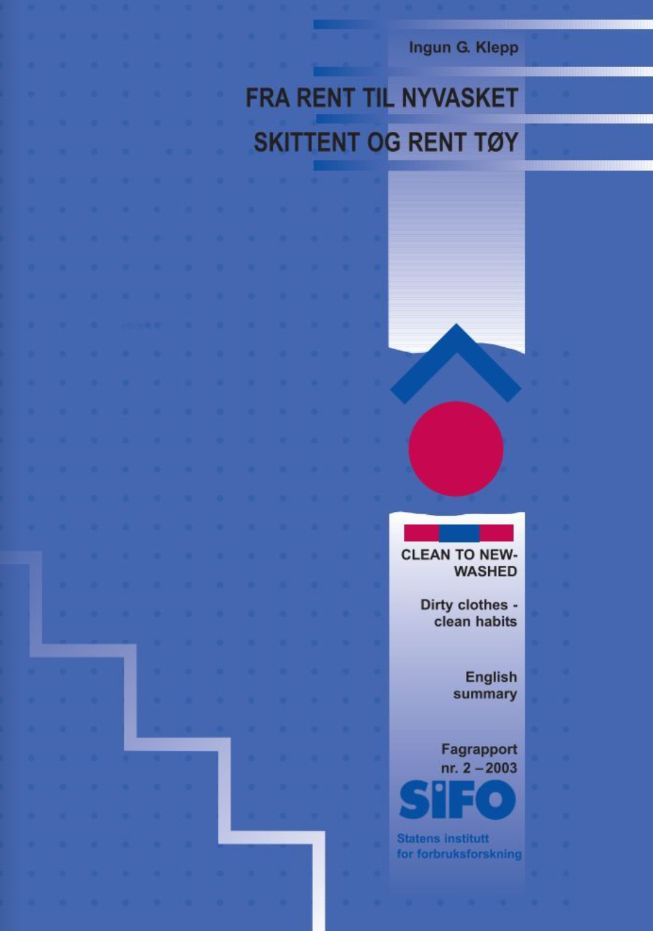Fra rent til nyvasket: Skittent og rent tøy

Ingun Grimstad Klepp
Summary
This report is an enquiry into why we wash clothes. What is it we expect when we place clothes in the washing machine? The most immediate reply must be that we want to have clean clothes. This is certainly part of the answer. But this alone does not explain either why we wash more than ever, or the manner in which we wash – and neither does it explain what is implied in the concept of ‘clean’. So what is ‘clean’ when “There is no such thing as absolute dirt” (Douglas 1997).
The material used to answer this question is drawn from various types of literature: handbooks, textbooks, surveys of washing customs, and guides on how to wash clothes. Another important source is the questionnaires sent out by Norwegian Ethnographic Surveys. A central assumption in answering this question is to look at what has been washed. Previously, washing clothes has been studied as a change in technology and time-use. But dirty and clean clothes have not formed part of these studies – with one exception: Eilert Sundt’s book on cleanliness in Norway. For this reason, the following report commences with a history of soiled clothes! Here, we trace the history of different types of dirty linen from Sundt’s study of Norway in the 1860s until the present day.
The report has given an answer to why we wash clothes, but it has not answered the question why it is we women who continue to undertake this task. The project From clean to newly-washed has not yet been completed. In subsequent work we will investigate why clothes-washing is one of the most women-dominated areas within the housework arena.
This article is written in Norwegian and you will find a link to it below.
Sammendrag
Rapporten undersøker hvorfor vi vasker. Hva ønsker vi å oppnå ved å legge tøyet i vaskemaskinen? Det mest nærliggende svaret er at vi ønsker å få tøyet rent. Og sikkert er dette en del av svaret. Men det forklarer verken at vi vasker mer enn før, eller at vi vasker annerledes – og det forklarer slett ikke hva som ligger i begrepet rent. For hva er rent når, som Mary Douglas uttrykte det, «there is no such thing as absolute dirt» (Douglas 1997:2).
Det materialet som brukes for å besvare spørsmålet er ulike typer litteratur: skikk og bruk- bøker, lærebøker, vaskevaneundersøkelser og litteratur med råd for klesvask. En annen viktig kilde er spørrelister sendt ut av Norsk Etnologisk Granskning (NEG). En helt sentral forutsetning for å svare på spørsmålet er å se på hva vi har vasket. Klesvask har tidligere vært studert som endringer i teknologi og tidsbruk. De skitne og rene klærne er ikke skrevet inn i denne historien, med ett unntak; Eilert Sundts bok om renslighetsstellet i Norge (Sundt 1975). Derfor starter rapporten med en skittentøyshistorie. I den forfølger vi ulike tekstiler som skittentøy fra hans beskrivelser av Norge på 1860-tallet og frem til i dag.
Klikk her for å lese hele rapporten (yumpu.com).